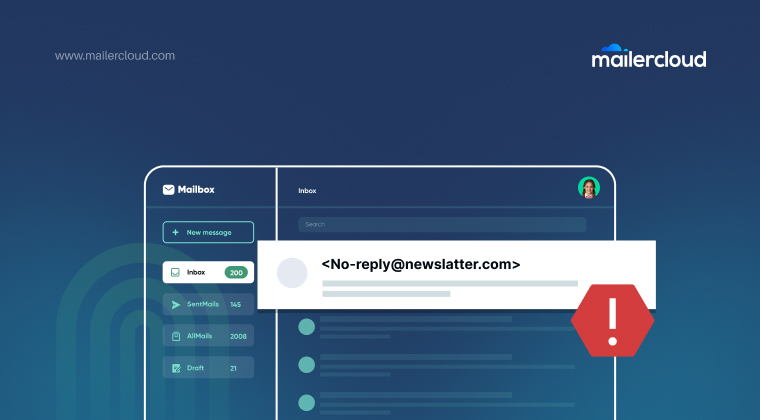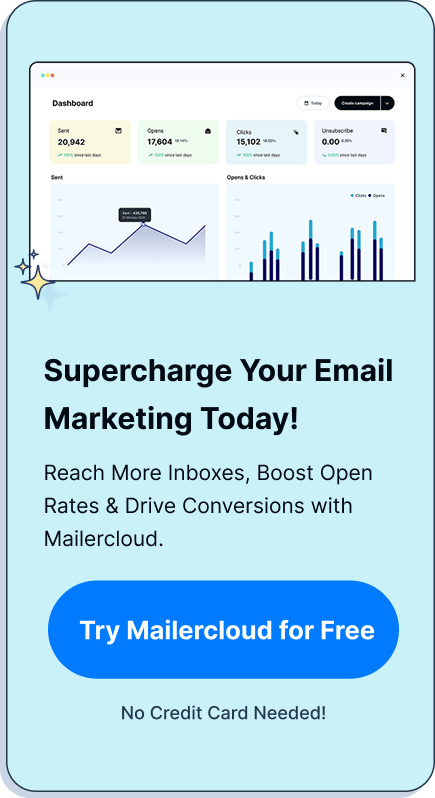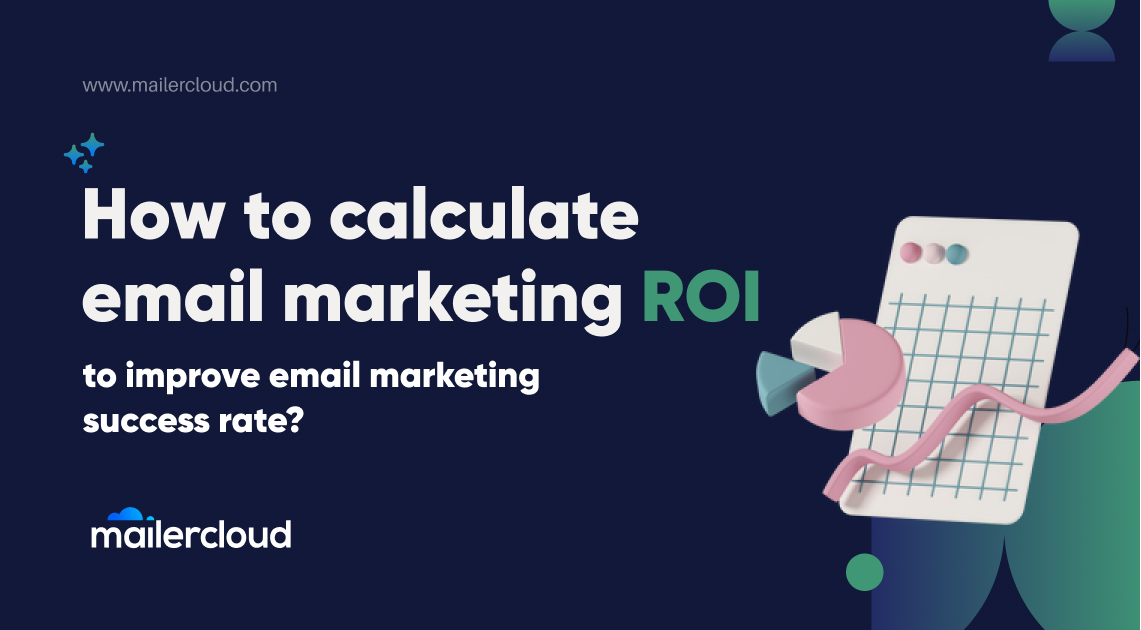When was the last time you received an email from [email protected]? You couldn’t reply, ask questions, or even unsubscribe by email. Sounds frustrating, right? That’s the downside of a no-reply email address—it blocks communication.
In today’s competitive digital landscape, email marketing isn’t just about sending emails; it’s about building relationships. And using a no-reply email can damage those relationships. In this blog, we’ll explain why using a noreply email address is outdated, how it can harm your email marketing strategy, and what alternatives are better for engagement, email deliverability, and overall customer experience.
Table of Contents
1. What Is a Noreply Email Address?
A no-reply email address is a type of email address like [email protected] that is not intended to receive replies. These addresses are used to send emails without expecting any interaction from recipients.
While convenient for companies, this type of email address shuts down any possibility of a response. That’s not ideal for email marketing, where engagement is key.
2. Why Do Companies Use Noreply Emails?
Businesses often use noreply email addresses to:
- Prevent their inboxes from being flooded with email responses
- Save time by not having to reply to emails manually
- Avoid spam or irrelevant replies from customers
While these may sound like valid reasons, using a do-not-reply email actually causes more harm than good, especially when trying to improve your email engagement rates.
3. Why You Shouldn’t Use a Noreply Email Address
Using a no-reply address can create a poor customer experience and hurt your brand reputation. Here’s why:
- Customers can’t reply to ask questions or share feedback
- It creates a one-sided relationship
- It appears impersonal and automated
- It may result in your email address being flagged as spam
The best email marketing campaigns prioritize the customer experience, which a noreply address completely ignores.
4. How Noreply Emails Can Harm Your Email Marketing
If you’re using a no-reply email address, you’re likely doing more damage than you realize:
- Email Deliverability: Emails from no-reply addresses are more likely to be flagged by spam filters, sending your message straight to the spam folder
- Lower Engagement Rates: Recipients often check the sender address before opening. If they see a noreply, they might not even open the email
- Negative Brand Perception: It tells your audience, “We don’t want to hear from you”
If your goal is to grow your email list and engage users, using a reply email address is essential.
5. Are Noreply Emails Legal?
Technically, no-reply email addresses aren’t illegal. But they could put you at risk of violating data protection laws like GDPR and CAN-SPAM if recipients can’t reply to emails to opt out.
Many users simply hit “reply” to unsubscribe. If that email bounces, they might mark your email as spam instead—hurting your email deliverability.
This is why using no-reply email addresses is not a best practice in today’s email marketing world.
6. Can You Respond to a Noreply Email?
Usually, no. If you try replying to an email from a noreply email address, you’ll get a bounce-back message from your email provider saying the address is not monitored. Some responses go into a black hole, never to be read.
That creates frustration for users who may have legitimate concerns or questions. Would you trust a brand that doesn’t want to hear from you?
7. Best Practices for Your Reply Email Address
Here’s how to do it right:
- Use a real sender name and address, such as [email protected]
- Choose a friendly and brand-aligned reply email address
- Use a dedicated email address for support (e.g. support@, contact@, or [email protected])
- Set up a reply-to email address that’s different from your sender address if needed
These steps show that you’re open to feedback and value customer input—hallmarks of the best email marketing strategies.
8. What Happens to Replies to Noreply Email Addresses?
They either:
- Bounce back with an error
- Go nowhere, never being read
- Frustrate users, especially those who want to unsubscribe or ask questions
This can cause recipients to mark the email as spam, harming your marketing efforts and making it harder to reach inboxes in the future.
9. Email Examples: Good vs. Bad Sender Addresses
Bad example:
From: [email protected] Subject: Your invoice
- Feels impersonal
- No way to respond
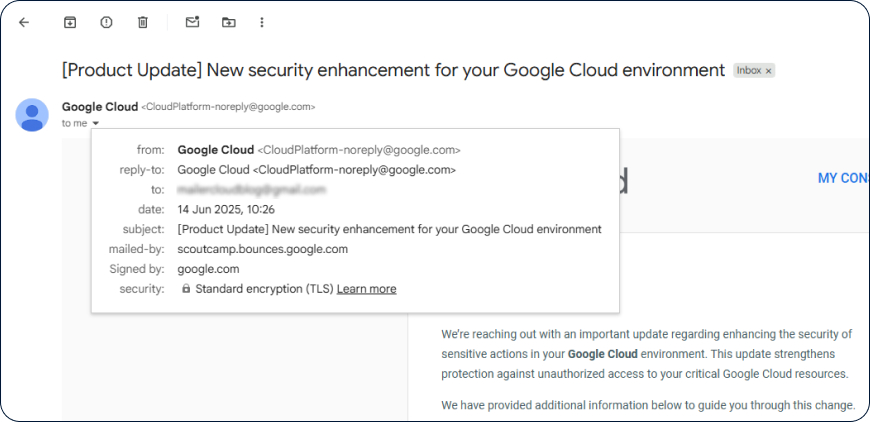
Good example:
From: [email protected] Reply-to: [email protected] Subject: Your invoice is ready
- Clear sender
- Easy to respond
- Builds trust
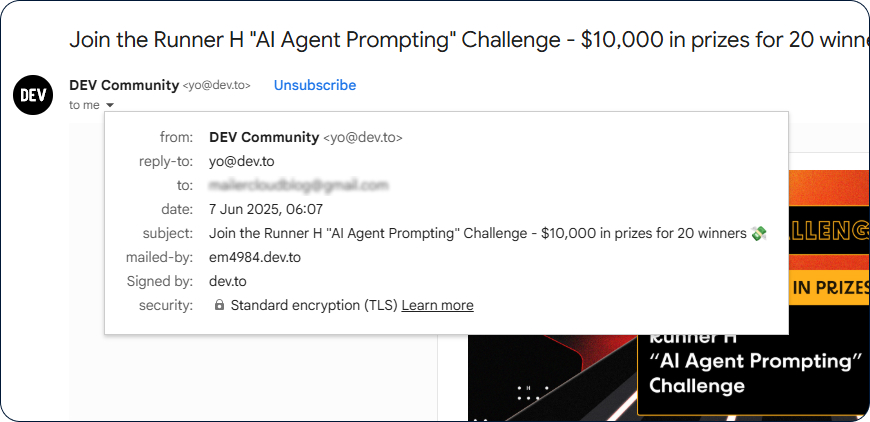
Using the right reply email address makes all the difference in email marketing performance.
10. What to Use Instead of a Noreply Email
Here are the top alternatives to sending do-not-reply emails:
1. Set Up a Dedicated Reply-To Email Address
This could be hello@, questions@, or [email protected]. It ensures that replies are organized and separate from your main inbox.
2. Automate with Filters
You can automate the handling of common replies, like out-of-office messages or delivery failures. Most email service providers offer tools to manage this easily.
3. Feed Replies Into Your Support System
Have a system where email responses automatically create tickets for your support team. This ensures no message is missed.
4. Use Email Marketing Tools With Flexible Sender Options
Platforms like Mailercloud allow you to use custom reply-to addresses, so even if your campaign is automated, responses go to a real inbox.
5. Add Support Links in the Body of the Email
Prevent overwhelm by proactively adding links to your help center, FAQ, or contact form in every email. This minimizes unnecessary email responses.
6. Humanize Your Sender Address
Include a team member’s name or role, like:
From: Rachel at Mailercloud <[email protected]>
This adds personality and trust, improving email engagement and customer experience.
Final Thoughts: Say No to Noreply Emails
In summary, using a noreply email address:
- Hurts email deliverability
- Reduces engagement
- Signals poor customer care
- Might violate legal requirements
- Damages your brand’s credibility
Instead, follow these best practices:
- Use a valid reply email address
- Create a dedicated email address for responses
- Avoid sending do-not-reply emails
- Route replies to your customer support workflow
- Add helpful links to reduce unnecessary replies
Key Takeaways
- A noreply email address is outdated and detrimental to your email marketing efforts.
- Avoid no-reply addresses in favor of human-friendly, monitored email addresses.
- Providing a way to respond improves customer experience and boosts trust.
- Always include a working reply-to address and support resources in your emails.
- Platforms like Mailercloud offer the tools to manage email responses effectively without sacrificing automation.
FAQ
What is a noreply email and why is it discouraged?
A noreply email is an email address like [email protected] that discourages customer replies. While some companies use this type of email to limit incoming email, it goes against marketing best practices. These email addresses to discourage two-way communication often result in poor engagement and email security risks.
Can I use a no-reply address for transactional emails?
Although technically possible, transactional emails like order confirmations or password resets should not be sent from a no-reply address. These emails are often expected to be reply-capable in case email recipients have questions. Instead, use a dedicated reply-to address or a support email address.
How do no-reply emails impact email marketing practice?
Using no-reply emails is considered a poor email marketing practice. These addresses limit responding to emails, which reduces customer trust and can lead to your messages being flagged by email clients or filtered by the email server.
What’s the best way to manage customer communication?
The best option is to set up a dedicated email account like [email protected] or [email protected]. This ensures you don’t miss any customer replies while keeping your marketing email and support workflows organized.
Why is a dedicated reply-to address important?
A reply-to address gets the response even when it’s different from the “From” email. Using a dedicated reply-to address improves email handling and reduces confusion for your team. It also enhances email authentication, boosting your deliverability.
Can a no-reply email affect your brand’s reputation?
Absolutely. When emails using no-reply addresses block interaction, customers feel unheard. Over time, your messages might be ignored or marked as spam. Good digital marketing respects two-way communication.
What kind of email address should I use for marketing campaigns?
A professional email address is an email that is reply-friendly and associated with your domain. Avoid generic support email addresses unless they are actively monitored. Your email address might impact trust and inbox placement.
How do I ensure my email messages reach the inbox?
To improve deliverability, verify your domain through proper email authentication (SPF, DKIM, DMARC), avoid spammy content, and never use addresses that are not the way to encourage replies. Regularly clean your address book and ensure recipients have opted in.
Is it okay to send marketing emails from my personal email account?
It’s not recommended. Always create email campaigns from a business domain, using an email account specifically created for marketing. This helps manage responses, organize contacts, and maintain email security.
Why is it important to let recipients reply to marketing emails?
Allowing replies shows you’re open to conversation, helps with email recipients’ trust, and boosts engagement. It also provides a way to reply for users who might need help or want to unsubscribe but don’t see the link.
What should I know about do-not-reply emails in email marketing?
Every marketer should know about do-not-reply emails and their downsides. They’re impersonal, often blocked by filters, and are not aligned with email marketing practice. For better results, avoid using noreply email addresses and offer genuine contact options.
Send smarter emails with Mailercloud
Free plan includes custom reply email addresses, full email authentication, 12,000 emails/month, and advanced automation.
Start for free
As a Marketing Director, I develop and implement marketing strategies, conduct market research, and manage a team of marketing professionals. With a successful track record of launching campaigns that drive revenue growth, I bring my marketing expertise to blog writing, creating engaging content that promotes the brand and its products/services.





























